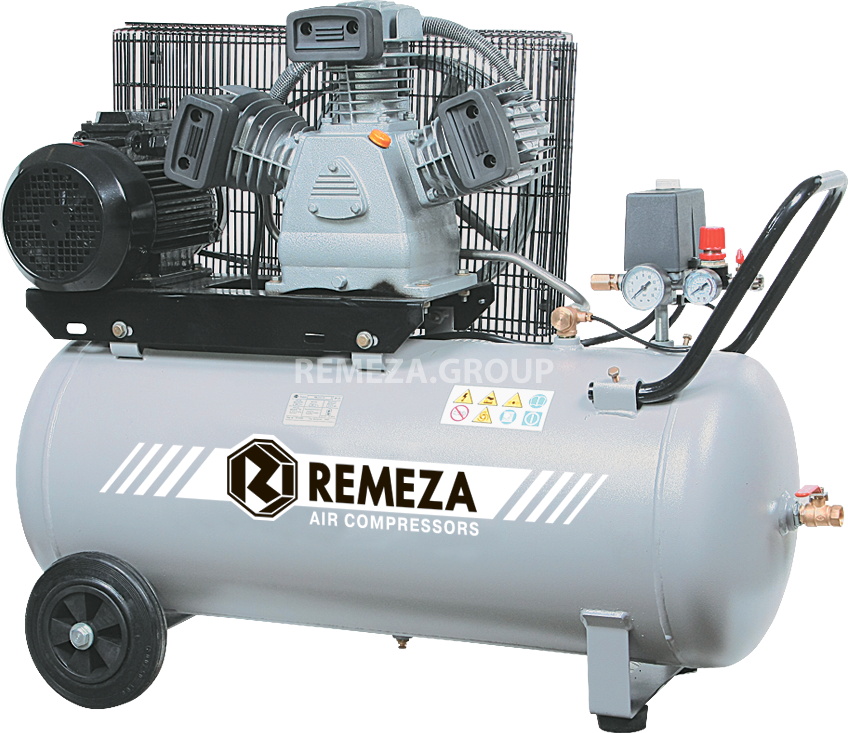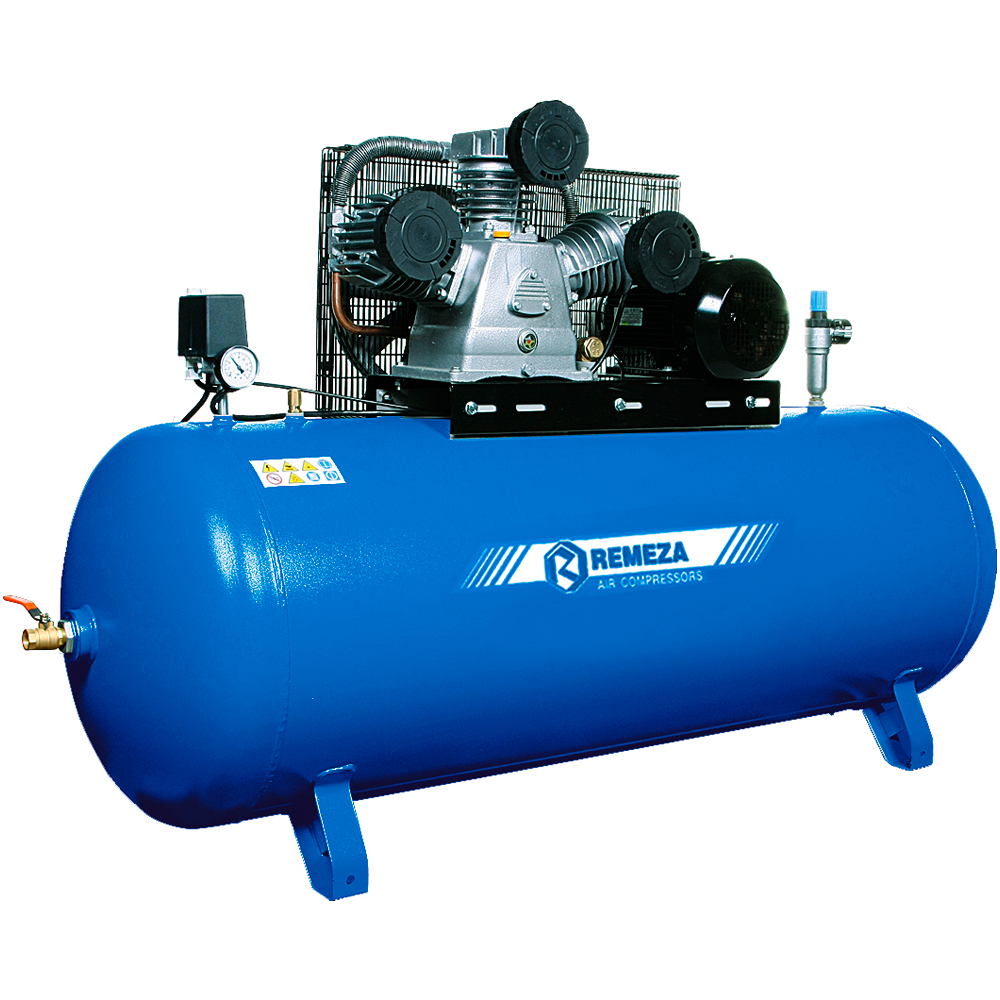Further you will learn what a compressor is and what its purpose is, the technical characteristics of the Remeza compressor, the design of the Remeza compressor, how the compressor from Remeza, how to use the Remeza compressor, what care is needed for the Remez compressor, what not to do with the compressor, how to transport and store the compressor "Remeza".
The content of the article
- Compressor - what is it, what is its purpose
- Technical characteristics of the compressor "Remeza"
- How the Remeza compressor works inside
- Operating instructions for the compressor "Remeza"
- Compressor automatically shuts off the engine at maximum pressure
- How to care for the Remeza compressor
- Rules for the transportation and storage of the compressor from "Remez"
- It is recommended to raise the equipment as low as possible from the floor.
Compressor - what is it, what is its purpose
Compressors - devices for compressing and storing air for subsequent use in pneumatic technology. Compressors produce compressed air, which is used in pneumatic devices, tools, and equipment.
Compressors "Remeza" are used in industry, car services and everyday life. The standard sets of compressors do not contain filters for air purification from moisture, oil and solid microelements. Only professional and specialized compressors are equipped with them in order to obtain an increased class of compressed air purity.

Technical characteristics of the compressor "Remeza"
The compression ratio is 2.
Cylinders, quantity - 4 pcs.
The volume of the oil tank is 2 liters.
Oil consumption for compressing a cubic meter of air is 0.02-0.03 grams.
Suction, performance - depends on the model, from 1000 to 1700 liters per minute.
The volume of the receiver is 5 hundred liters.
Power - depends on the model, from 7.5 to 11 kilowatts.
Dimensions - 200 by 61.5 by 125 centimeters (length by width by height).
Weight - depends on the model, from 340 to 385 kilograms.
The number of engine hours before overhaul is 7.5 thousand.
How the Remeza compressor works inside
The main components of Remeza compressors:
- Working block, pistons.
- Motor/electric motor.
- Belt.
- Receiver.
- Enclosure/protective cover.
- Pressure gauge.
- Check valve.
- Safety valve.
- Condensate drainage system.
- Receiver tap.
- Bed / base.
- Compressor legs/wheels.
- Shock absorbers on legs.
- Automation.
- Control panel or pressure switch with switch.
Operating instructions for the compressor "Remeza"
The first step after receiving the compressor is to unpack it - lift the device, remove the pallet, remove the packaging, seals.
Next, install the unit on shock absorbers in a predetermined place. Check the instrument for malfunctions/damage:
Carefully inspect the electrical cable - it must be solid, without damage. Also check the integrity of the pipeline. At this stage, check the documents and the characteristics of the device, everything must match. Tighten the mounting bolts if necessary.

First start:
- Wipe the compressor with a dry cloth.
- Pour oil into the system, you need to fill in 2 liters.
- Open the air outlet cock on the receiver.
- Connect the appliance to the mains.
- Press the power button on the control panel.
- Wait a few minutes until the oil is distributed throughout the system and the mechanism warms up. The receiver tap is open.
- Close the outlet cock.
- Wait until the receiver is completely filled, the pressure rises to the maximum level.
- Reduce pressure. Release air from the system - connect pneumatic equipment or open the receiver valve.
Compressor automatically shuts off the engine at maximum pressure
Subsequent times of switching on the Remeza compressor:
- Inspect the instrument for damage/faults.
- Wipe the device with a dry cloth.
- Connect pneumatic equipment.
- Plug the compressor into a socket.
- Press the "Auto" button on the panel.
- Wait until the receiver is full and use compressed air.
To turn off the compressor:
- Press the off button on the panel.
- Reduce pressure, bleed air from system.
- Remove the plug from the socket.
How to care for the Remeza compressor
To prolong the life of your device, you should daily:
- Check, monitor and correct the oil level in the oil tank and system.
- Inspect the compressor for external faults.
- Drain condensate from the system.
- Clean / wash equipment from dust and dirt.
- Check bolts and nuts for tightness at the end of each working day.
We recommend every week / 50 working hours to check the tightness of the bolts in the piston block, in particular the cylinder head bolts, as well as check the tension of the drive belt and its integrity.
Every two/four weeks, you need to change the oil in the block, check the integrity, clean or replace the primary coarse filter if necessary.
Once every three months, change the oil, check the tension of the belt drive, as well as the fastening of the bed with working elements to the receiver.
Once every six months, it is necessary to change the coarse air filter. Check and service the check valve every year.
What is forbidden to do with the compressor:
Use without grounding, incorrectly connected compressor or without electrical protection.
Operate during precipitation - during snow / rain - without cover / protection. Install the compressor in an explosive area. Run the compressor without shock absorbers fixed to the floor.
Rules for the transportation and storage of the compressor from "Remez"
To transport the compressor from Remez:
- Disconnect the device from the power supply and blower.
- Reduce the pressure inside the receiver - it should be at atmospheric level.
- Secure wires, hoses, pipes and other loose items.
- Using specialized tools, lift the compressor.
- Place the unit on a pallet, in a package or shipping container.
It is recommended to raise the equipment as low as possible from the floor.
The compressor can only be transported in closed facilities - in covered bodies / trailers of trucks or cars, train cars, containers. When transporting the compressor, follow standard safety precautions and regulations, depending on the labeling of your equipment.
You can store Remeza compressors in a package, covered on a pallet or in a container. The device must be stored indoors - the compressor must not be exposed to snow, rain or other environmental conditions. At the same time, the air must be clean - without large contaminants and not dusty. Its relative humidity should not exceed 80%, so as not to spoil the unit. Remeza compressors can be stored at temperatures from -25 degrees Celsius to +50 degrees Celsius.


